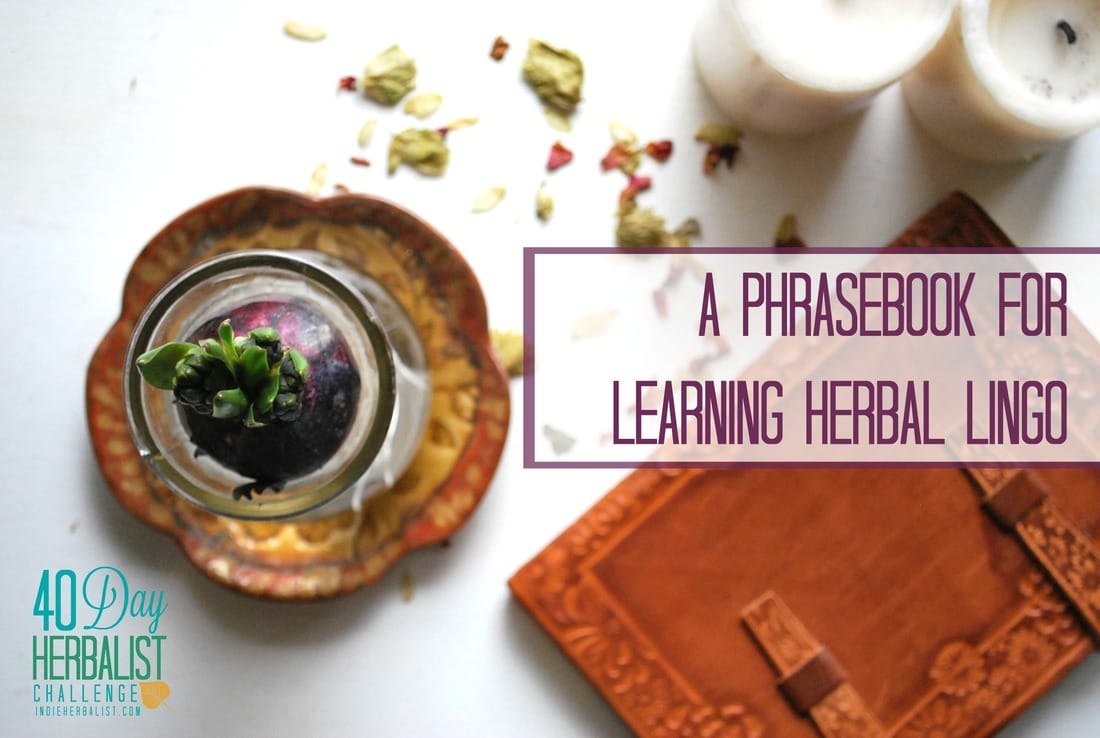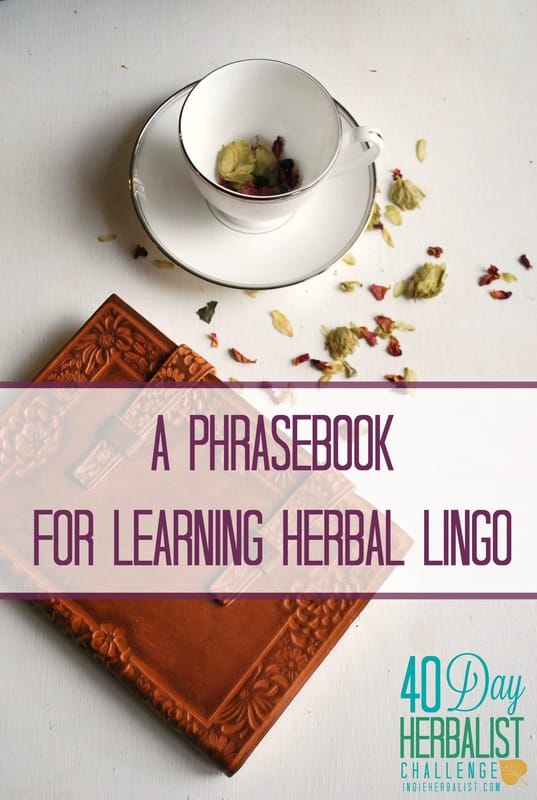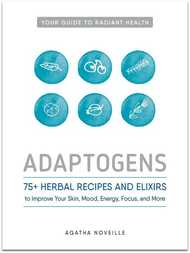Links contained in this post and elsewhere on my website may include affiliate links. When you make a purchase through these links, I earn a commission at no additional cost to you. I only link to products and services that I love - and that I think you will love, too!
Day 3: Learning Herbal Lingo
Welcome to Day 3 of the 40 Day Herbalist Challenge! Today we will explore some of the herbal jargon that can seem mysterious and esoteric- but really just helps us be specific and concise when discussing herbs and herbalism.
Time needed: 30-60 minutes
Tools/Supplies: Notebook, flashcards, pens/markers
Types of Herbal Vocabulary
At first, learning herbalism can seem like learning a whole new language. There is special vocabulary to describe the plants themselves, types of herbal preparations, and even the actions and uses of herbs. Today, we will focus on the most common types of vocabulary and begin learning about herbal actions.
Botanical Names (aka Binomials)
Do you have the right plant? Common names can sometimes belong to more than one plant. Using the binomial, a two part scientific name, helps you determine that you are working with the correct plant. An example is yarrow, also known as devil’s plaything, old man’s pepper, and little feather. Although it has all of these common names (plus some!) there is only one binomial for yarrow: Achillea millefolium. It’s the same with every other plant – there may be many common names, but there will be only one binomial. These can be tricky to pronounce, but you will find more resources at the end of today’s Mission that will help you gain confidence.
Plant Parts
Root, leaf, and flower are pretty straight forward, but what about stamen, rhizome, and drupe? Learning the more technical parts of plant anatomy can help when you begin learning plant identification with field guides. Pictures can be helpful in a field guide, of course, but sometimes they either aren’t very good or only show the plant during one growth phase (such as when it’s flowering). Sometimes, two plants can look similar at first glance even though they are actually very different. Knowing a little botany vocabulary can help you use the written description of a plant to hone in on details that you might miss if you rely on pictures.
Preparations
Oxymel, decoction, extract, glycerite. . . so many strange sounding things can be made with herbs. We will be exploring many of these later in the Challenge, so we will save this category for later. That leaves us with Herbal Properties and Actions.
Herbal Properties and Actions
This can be one of the most difficult subsets of herbal vocabulary, but it’s also one of the most helpful. Many books and resources will list herbal actions as part of monographs and plant profiles. It functions as a sort of shorthand for listing the uses of a plant. Knowing the properties and actions of an herb provides a quick snapshot that can help you remember more nuanced uses later on.
Here’s a quick phrasebook for you that I pulled from one of my eBooks. It’s not an exhaustive list, but it should help you get your bearings!
Alterative: an herb that helps the body rebalance and return to normal health
Anodyne: an herb traditionally used for relieving pain.
Anti- inflammatory: an herb that promotes a healthy inflammatory response
Antibacterial: herbs that support immune response beneficial to the body in fighting bacterial invaders.
Anticatarrhal: helps the body eliminate too much mucus build up in the lungs or head.
Antirheumatic: any herb used to help promote healthy inflammatory response, reduce swelling or pain; traditionally used to relieve the inflammation, swelling and pain associated with rheumatoid arthritis or similar conditions.
Antispasmodic: relieves spasms or muscular tension
Antitussive: helps to eliminate coughing
Antiviral: an herb with immune system supporting properties, especially one that helps the body fight off viruses
Aperient: a gentle laxative
Astringent: an herb that promotes the constriction of body tissues, such as the skin or mucus membranes
Bronchodilator: an herb that promotes relaxation and opening of the airways
Cardiac: heart related
Carminative: an herb that helps with flatulence
Cholagogue: an herb that promotes production and secretion of healthy bile levels from the gallbladder
Demulcent: an herb that helps the body cope with irritation or inflammation, especially of a mucus membrane.
Diaphoretic: an herb that encourages sweating
Diuretic: an herb that supports or stimulates the flow of urine
Emmenagogue: an herb that stimulants pelvic blood flow to support healthy menstruation.
Emollient: an herb that softens the skin, or soothes the skin.
Expectorant: an herb that supports the body’s ability to cough up phlegm or mucus from the lungs.
Hemostatic: an herb that supports the suppression of bleeding from cuts or wounds.
Hypnotic: an herb that promotes sleep
Immunomodulator: an herb that can influence the immune system.
Laxative: an herb that encourages the evacuation of the bowels.
Nervine: an herb with a calming influence on the nerves, but that also helps to rebalance the nervous system.
Relaxant: an herb that is used to balance excessive tension in the body.
Sedative: an herb with a calming influence on the body or mind.
Stimulant: an herb that increases activity of the body or of the nervous system.
Tonic: an herb used to increase well being of the body as a whole, or the health of a particular organ.
Vulnerary: an herb that supports the healing response of skin or mucus membranes.
At the end of today’s lesson, you will find even more resources for herbal vocabulary, but let’s take a look at today’s Mission!
Your Mission
Today’s Mission is all about getting old school by using the vocabulary listed earlier in today’s challenge to make some Herbal Actions flashcards .
Grab a stack of index cards and some markers or pens. You can make them as simple or fancy as you like! Rather than make one set, I suggest you make two.
If you have one set, you can quiz yourself- but if you have two sets, you can also study by matching one deck to the other which helps keep things interesting.
Shuffle each set and place them side by side. Turn one set with the action facing up, and the second set with the definition facing up, and sort through your flashcard decks to match the action with the definition. I recommend having the Action/Definition on both cards just in case you get stumped- so you can peek!
Read on below for extra resources and more fun stuff!
More Fun
|
Ready for Day 4 of the Challenge? Find it here!
Day 4: Useful Info About Herbs Here are more articles from around the Internet that discuss useful words to add to your herbal vocabulary. Enjoy! General Resources on Herb Speak More Resources on Botanical Names Herbal Actions |
Agatha is the author of the popular new herbal recipe book, Adaptogens: Your Guide to Radiant Health!
|


